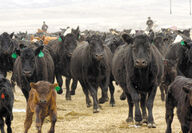Sorted by date Results 1 - 4 of 4
Montana has set multiple new records for COVID-19 cases and hospitalizations in the past week, and now ranks among the top states in the nation in daily new cases per capita. Hospitals in some of Montana’s largest cities are at or near capacity, while health care providers are pleading with people to heed public health advice. Public health departments’ say they aren’t able to keep up with contact tracing and feel powerless in the face of politically charged resistance to masks and social distancing. “Right now, the biggest challenge is [tha...

As COVID-19 cases continue to rise in Montana, surveillance testing designed to serve as an early warning system to prevent large outbreaks and keep businesses open is increasingly becoming ineffective, public health officials told Montana Free Press. From Libby to Butte to Great Falls to Gardiner, tests of asymptomatic individuals are taking up to two weeks to produce results. That lag time can eliminate the strategic effectiveness of the testing, which is aimed at vulnerable populations like...
The beef supply chain in the United States typically starts on a ranch like Marty Malone’s, in Paradise Valley, with the birth of calves. After a summer of grazing, a cow reaches about 500 - 700 pounds. Then the cow is sold to a feedlot in the Midwest or Great Plains, where it eats feed like corn and barley to fatten up. At about 1,200 pounds and 18 months of age, it’s slaughtered at a nearby packing plant. Then it’s shipped to a wholesaler, who sells the meat to a restaurant or grocery store, where an end customer purchases it. One month...

The beef supply chain in the United States typically starts on a ranch like Marty Malone's, in Paradise Valley, with the birth of calves. After a summer of grazing, a cow reaches about 500 to 700 pounds. Then the cow is sold to a feedlot in the Midwest or Great Plains, where it eats feed like corn and barley to fatten up. At about 1,200 pounds and 18 months of age, it's slaughtered at a nearby packing plant. Then it's shipped to a wholesaler, who sells the meat to a restaurant or grocery store,...